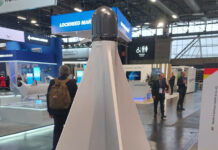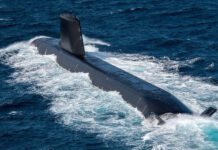The FIST (Future Integrated Soldier Technology) program, currently in the assessment phase, has gone through several phases of trials, which highlighted some technical issues with equipment subsystems. These tests demonstrated how the FIST will integrate within the British Army’s Bowman network and work with other systems currently under planning stage. Recent tests validated the improvements made with weapons and firepower of the fire team.
Each FIST fire team comprises a commander, grenadier and two riflemen. The basic weapon used is the SA-80A2 individual weapon. All team members will use this rifle in different configuration. The grenadier also carries a 40mm grenade launcher, the rifleman – marksman is armed with a long barrel version of the SA-80 and the rifleman gunner carries a light machine gun. Accurate firepower, particularly by machine gun and UGL (which will be armed with lethal and less than lethal ammunition) will enable the fire team to engage targets at short and medium range, maneuvering effectively and issue less than lethal warning effects.
All weapons are equipped with close-quarter optical sights. For the FIST trials, COGS sights were supplied to commanders and grenadiers. Gunners operated the Qioptiq VIPIR thermal day sight and the marksman a lightweight day sight. Grenadiers used ISTEC quadrant sight with EOTECH optic sights and Vectronix laser rangefinder. With the improved weapon, grenadiers were able to score better first-round hits.
The present individual radio used by British infantry teams consists of the Personal Role Radio, networked at the platoon level. The reach of the PRR could be extended to the company level, utilizing future Bowman 354 sets. The radio will also be integrated with the platoon’s vehicles, get encryption and data transfer capability, embedded with GPS and link to a hand-held computer. The PRR will be able to support Low Latency, Enhanced Situational Awareness (ELSA) functionality as well as report the location and status of lost individuals.For target acquisition, reconnaissance and observation, commanders used the Moskito, handheld day/night Commander Target Locator (CTL) from Vectronix. This device provides x5 magnification in day (x3 at night) while measuring range and bearing to the target. An Off-Axis Viewing Device developed by Ocutek was also tested. The system can be used from behind cover, for target detection and recognition from useful ranges, facilitating safe observation from behind obstacles and walls. Remotely operated and viewed on a console or a wrist mounted display, the system captures stores and replays selected images for further intelligence analysis.
The electronic ensemble of the FIST consists of several common modules, some are identical to all users and others are role- specific. All FIST team members will use a voice and data radio with embedded GPS. The actual C4I gear carried by each soldier will be tailored to his role and missions. The commander will also get a computer, display and CTL link, enabling him to carry out selected missions, such as navigation, reporting, situation analysis, planning and target hand-off functions.
According to John Foley, FIST program Technical Director at Thales, During testing, the limitations of personal radios and low-power data radios became evident, since they are operating within very strict limitation of dimensions and power (RF emission levels, antenna length and height etc.) These were especially restrictive in rough and even mildly forested terrain. Soldier posture also affected radio performance, especially in kneeling and prone positions behind cover, which also shields radio emission. The FIST C4I-Soldier system selected for Combined Operational Effectiveness and Investment Appraisal (COEIA) trials included the Cobham C3I system and the Microlight radio from Raytheon. The full C4I-Commander ensemble weighed about five kg and could sustain six hours of operation.
Future FIST developments will be structured into several increments. The first will utilize the baseline FIST suite, including the weapons, communications, and navigation and computing for commanders (situational reporting) and personal gear. The second increment will employ upgrades to the original systems, particularly as Bowman systems are enhanced to enable further integration within command and control elements. Further increments will also include weapons enhancements.
The FIST gear is still quite heavy, especially the ballistic protection, where weight reduction is recommended. The most significant constraint on FIST is power. According to Col. A.G. Bain, British Army Force Development Headquarters Infantry, at the section level, the Army plans to use the FIST with Personal Equipment and Operational Clothing (PECOC), Bowman radio system, man-pack ECM system to ward of IEDs and a future family of small arms system (FFSAS). At platoon level, the army is looking for the fielding of an anti-structure munition (ASM), 60m mortar. This vehicle will also be able to supply power recharging during extended missions. The equipment used by the fire team will be standardized across a range of modular systems including weapons, sights, night vision systems and communications of which fire teams will be able to share and swap modeling the special-forces ‘golf bag’ concept.
Colonel Bain admitted that while the sensible optimum weight of personal gear and equipment should not exceed 25 kg, the current load reaches 52 kg and more. One of the possible solutions to this problem is to offload some of the weight onto a robust load carrier. The British Army plans to field the new organic Ultra-Light Utility Vehicle (ULUV), to carry some of the platoon’s extra loads.
(Updated: 2007)
















